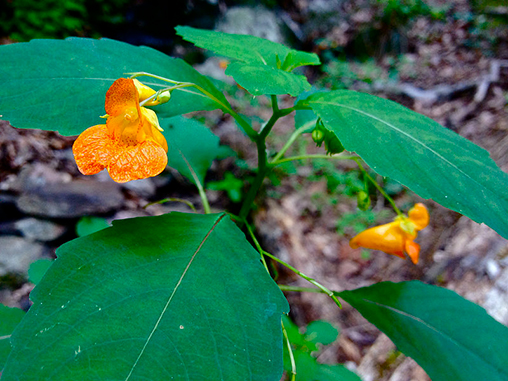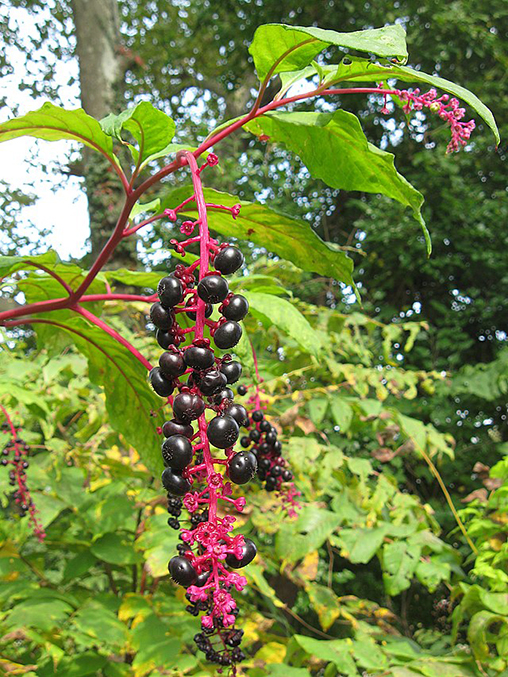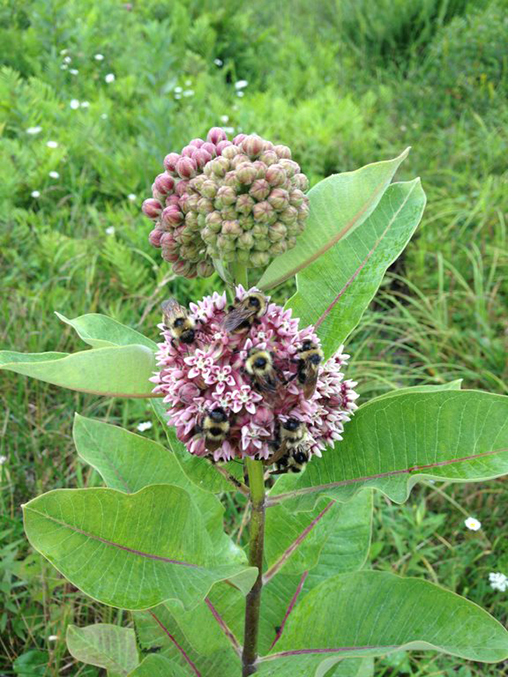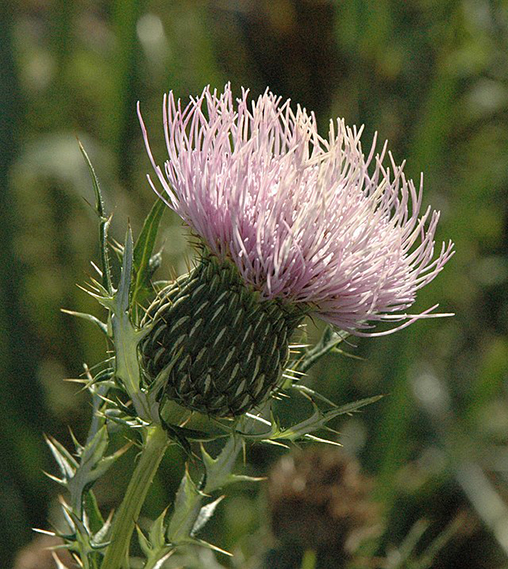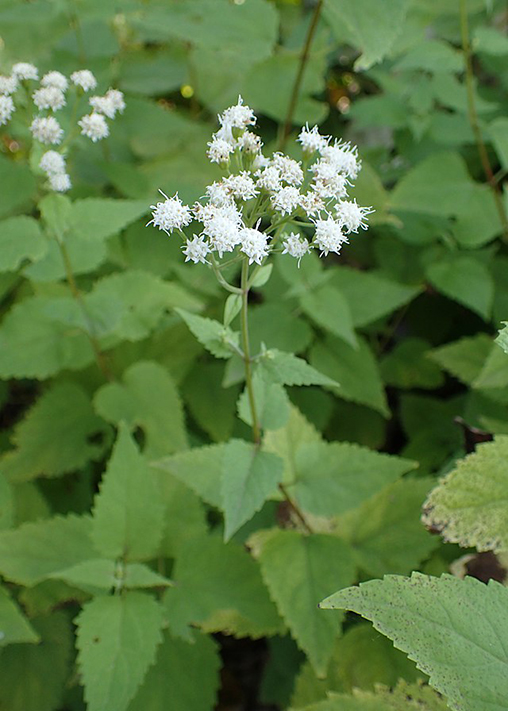What's in a Name? Summer-Blooming 'Weeds' and the Benefits of Native Plants in Parks

More than 1,300 native plant species help sustain our city's biodiversity. Native plants are the primary resource needed to sustain our city’s resident and migratory wildlife. These plants have co-evolved with our local wildlife, including pollinators, to provide the right sources of food and shelter when they need it most. But despite the vital ecosystem services native plants provide, some have acquired a bad reputation as “weeds” to some folks. That’s because the term “weed” is highly subjective.
To a gardener, a weed may be any unwanted plant that grows in a cultivated, manicured setting. To a farmer, a weed may be any plant other than selected crops that grow on farmland. For example, when Europeans settled in this area, they began farming plants for food and other resources, such as clothes and buildings. The native plants that grew on their farms with their crops were often regarded as weeds and plowed over or removed. For several of these native plants, the word "weed" became part of their common names: milkweed, ironweed, ragweed, smartweed, pokeweed, horseweed, bindweed, sneezeweed, and many others. But at NYC Parks, we don't consider them weeds!
These native plants can be found in NYC's healthiest forests, grasslands, meadows, or street tree pits and play an essential role in providing food and habitat for pollinators, migratory birds, and other wildlife. They are even more spectacular and easy to identify when in bloom and enjoyed by our pollinators in the summertime!
Explore some common "weeds" that bloom in the summer:
Jewelweed
Impatiens capensis, Balsaminaceae family
- Jewelweed is a 2-5 foot tall annual herb that grows in moist woods, stream edges, swamps, and other wet areas.
- The leaves are oval-shaped with broad teeth along the edges, the stems are green and smooth, and the spur-shaped flowers are orange and mottled with reddish spots.
- Jewelweed produces both nectar and pollen and is pollinated by hummingbirds, butterflies, and long-tongued bees such as bumblebees and honeybees.
- "Touch me not" is another common name used for this plant because ripe fruit capsules explosively burst when touched, ejecting 4-5 seeds into the air. In the fall, you can try giving the fruit a gentle squeeze to watch it pop open!
Sightings: Jewelweed is very common in NYC. It can be found in almost any park with moist, semi-shaded habitat, such as Van Cortlandt Park, Inwood Hill Park, Alley Pond Park, Cunningham Park, and Blue Heron Park.
Pokeweed
Phytolacca americana, Phytolaccaceae family
- Pokeweed is a 4-10 foot tall perennial herb. The leaves are oval-shaped with smooth edges, and the flowers are arranged in clusters called "inflorescences." Each inflorescence has several small flowers with five-lobed white or pink petal-like parts called "sepals."
- Pokeweed produces shiny, dark purple berries enjoyed by more than 30 species of birds, including many warblers species, squirrels, raccoons, opossums, and other small mammals.
- Indigenous peoples of North America have used pokeweed for herbal remedies for centuries.
Sightings: Pokeweed grows in forest edges, meadows, and fields.
Common Milkweed
Asclepias syriaca, Asclepiadaceae family
- Common milkweed is a 3-6 foot tall perennial herb that produces round clusters of dusty pink flowers and has leaves that are broad, opposite, and clasping (the base of the leaf partially surrounds the stem).
- Milkweed plants play an essential role in the lives of monarch butterflies. Milkweed is the sole food source for monarch caterpillars, and female monarchs exclusively lay their eggs on these plants.
Sightings: Common milkweed grows in fields, meadows, and roadsides and is widespread throughout New York City. Some of the best parks to find milkweed include Van Cortlandt Park, Alley Pond Park, Prospect Park, Central Park, and Ocean Breeze Park.
Caring for Milkweed and Monarch Butterflies
The overuse of pesticides, climate change, and development threaten milkweed populations and monarch butterfly populations. In New York City, 11 species of milkweed have been documented, but only three are common today, and several may be extinct. NYC Parks helps expand monarch habitat by planting milkweeds in natural areas, gardens, green infrastructure sites, and pollinator places and preserving habitat where milkweeds naturally occur.
Field Thistle
Cirsium discolor, Asteraceae family
- Field thistle is a 3-10 foot tall biennial or short-lived perennial that produces numerous flower heads ranging from pink to lavender. On native thistles, the underside of the leaves is white and hairy; the leaves of non-native thistles are typically green on both sides.
- Plants in the Cirsium genus are visited by insects more frequently than any other plant genus. Insects like grasshoppers, leaf beetles, fruit flies, snout moths, and more feed on the leaves, stems, flowers, and seeds of native thistles. Even songbirds like to eat the highly nutritious seeds!
- New York City is also home to Cirsium horridulum var. horridulum (yellow thistle) – a rare thistle species in many parts of the northeastern United States.
Sightings: Field thistle grows in fields, open woods, river bottoms, and disturbed areas, such as Pelham Bay Park, Conference House Park, and LaTourette Park.
Caring for Thistles and Pollinators
NYC Parks works to plant and protect native thistle species because their nectar and pollen are essential food sources to pollinators like bees, butterflies, and moths, and higher quality than non-native thistles.
White Snakeroot
Ageratina altissima, Asteraceae family
- White snakeroot is a 1-5 foot tall perennial herb. It has oval or heart-shaped leaves with serrated edges, and the flowers grow as flat-topped clusters of small, fuzzy, white flower heads.
- This plant provides habitat and food for leaf-mining flies. The adult females pierce the plant tissue and deposit their eggs. Once the eggs develop into larvae, they feed on the tissue inside the plant – leaving snake-like trails that can be observed on the surface of the leaves. This is where white snakeroot gets its common name.
- White snakeroot is particularly abundant in NYC because it is shade tolerant and can grow in wet to moderately dry soils. These plants prefer neutral to basic soil, which characterizes urban soils with high inputs of concrete, masonry rubble, plaster, road salt, etc.
Sightings: According to the NYC Ecoflora project, it is the most common species observed in New York City on iNaturalist. It grows in moist forests and thickets.
How NYC Parks Protects Native Plants
- NYC Parks staff monitor and survey plant populations each year. Results of these surveys help guide management and conservation action plans to protect sensitive species.
- NYC Parks restores several acres of forests each year. These efforts help control introduced species that out-compete our native species and reduce the diversity and function of our ecosystems.
- In recognition of the critical role native plants play in keeping our ecosystems diverse and providing healthy habitat, the City Council passed Local Law 11 of 2013. This law aims to decrease the spread of introduced species in favor of native plants throughout the landscapes of New York City, big and small. It also requires that NYC Parks plant only native species in the natural areas of our parks.
What You Can Do To Support Native Plants and Pollinators
- Plant native plants wherever you can! By planting native plants, you can transform your home garden or backyard into a habitat corridor, facilitating the movement of pollinators, small mammals, and birds between our natural areas as well as to the broader region. The Native Species Planting Guide for New York City provides suggestions for planting in various habitat and urban environments.
- Volunteer with our Stewardship team o help care for native plants and pollinator-friendly habitats.

